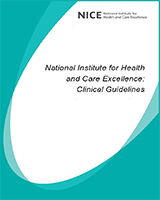| Objective | To determine if early consultant review at acute presentation improves patient outcomes and reduces rate of admission. |
| Rationale | Specialists ensure that patients are on the correct treatment pathway, moving along the pathway in a timely manner, and not subject to unexpected delays or complications. The first step in the process, determining the correct diagnosis and initial treatment, needs to be taken in a timely manner, as delays can compromise patient outcomes. The question is at what point is specialist involvement essential? At the point of admission, or following initial review and stabilisation by the other members of the clinical team? |
| Population | Adults and young people (16 years and over) with a suspected or confirmed AME |
| Intervention | Early consultant review |
| Comparison | Later consultant review (any time point that is later than the intervention) |
| Outcomes | Patient outcomes;
Early diagnosis (IMPORTANT) Hospital admission (IMPORTANT) Quality of life (CRITICAL) GP visits (IMPORTANT) Mortality (CRITICAL) Avoidable adverse events (CRITICAL) Diagnostic test number (IMPORTANT) Patient satisfaction (CRITICAL) Length of stay in ED (CRITICAL) Readmission up to 30 days (IMPORTANT) Discharge (IMPORTANT) Referrals from admissions (IMPORTANT)
Staff outcomes;
Carer outcome;
|
| Exclusion | |
| Search criteria |
The databases to be searched are: Medline, Embase, the Cochrane Library
Date limits for search: None
Language: English only
|
| The review strategy | Systematic reviews (SRs) of RCTs, RCTs, observational studies only to be included if no relevant SRs or RCTs are identified. |
| Analysis |
Data synthesis of RCT data.
Meta-analysis where appropriate will be conducted.
Studies in the following subgroup populations will be included:
In addition, if studies have pre-specified in their protocols that results for any of these subgroup populations will be analysed separately, then they will be included. The methodological quality of each study will be assessed using the Evibase checklist and GRADE.
|
| Key papers | |
| Number of clinical questions | Max occupancy 85%, often at 95% ED / RAT model in ED, note time points (not enough staff at moments to implement) (PD ideal world seen within 1 hour by consultant). |
| HE questions | Crucial to conceptual. RF does diagnostic reviews (out of 10) for HE. |
